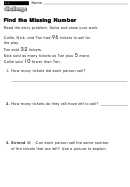


By 99, all possible combinations of symbols in two positions have been used, and a new position to the left is created in which the symbol occupying that place is multiplied by 100. When twenty is reached, the symbol to the left (the one multiplied by 10) changes to “2,” and the first position then runs from 0 to 9, representing the numbers 20 to 29, and so on. In this manner a representation for numbers 10 – 19 is obtained. When ten is reached, the smallest non-zero symbol, “1”, is placed into this new position, letting the first position run again from 0 to 9. The chosen way to count numbers after 9 is to use a second position to the left to represent numbers multiplied by ten. Having ten basic numbers or symbols, one of which represents nothing or zero, means that numbers greater than nine can be expressed only by combining symbols in some manner. This numeral system is called the Decimal Numeral System (deci being Latin for ten). Contemporary systems of counting have gone far beyond Roman numerals and there is no finger on a hand that corresponds to the symbol “0.” However, the most prevalent numeral system still uses precisely ten symbols. Two such hands united by crossed wrists make an “X”, the Roman numeral for ten. However, a common sense folk etymology for Roman numerals attributes the Roman numeral “I” to the shape of a single finger and the Roman numeral “V” to a hand with five outstretched fingers. The most accepted theory on Roman numerals is that they evolved from Etruscan symbols. In fact, this has been done since counting became part of human culture.

Small children use their fingers to count, add, and subtract. The modern system of counting using precisely ten symbols appears to relate to the fact that human hands have ten fingers. FICTION (SOAPS, DRAMAS, AND REALITY/SURVIVAL SHOW).FILM ADAPTATIONS OF NOVELS, SHORT STORIES, OR PLAYS.TALKING AND PLAYING WITH MOVIES: AGES 3-8.


 0 kommentar(er)
0 kommentar(er)
